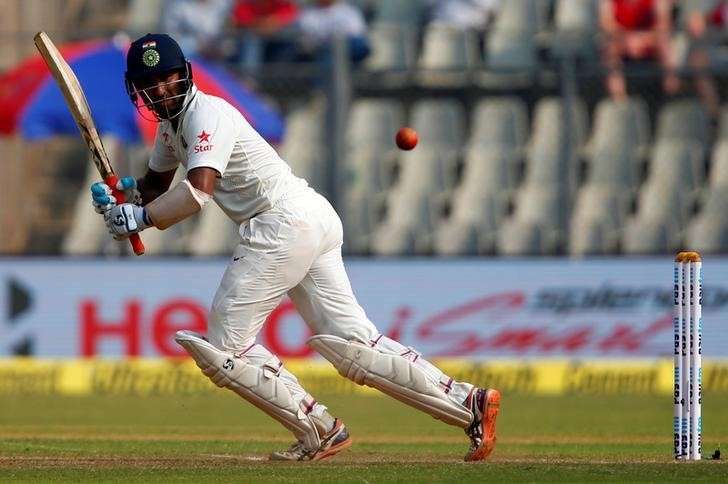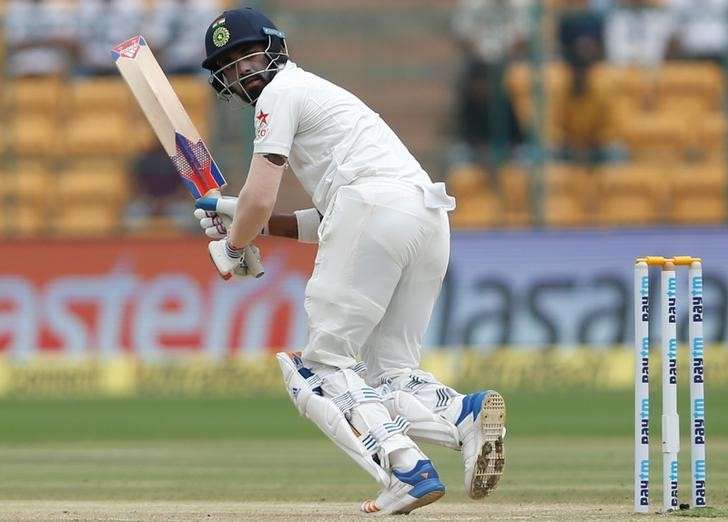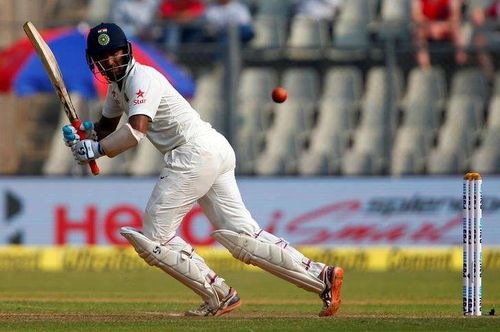
Steve Smith and Cheteshwar Pujara's batting lessons from Pune and Bangalore
Batting is the most difficult thing to do in this ongoing India-Australia Test series. The pitches have been incredibly tough and statistics further prove this point. So far in 8 innings, the highest team score has been 285 and an average run per wicket is merely 20.10. Only one century has been scored so far and no batsman has faced more than 250 balls in a single inning.
This reflects the difficulty of the batting conditions and with two Tests to go, the situation is going to remain the same. There is plenty of time before the third Test commences and hence batsmen from both sides will have to do some soul searching and have to find out a method to survive in these testing conditions.
Temperament, patience and application
Steve Smith’s hundred in the first Test and Cheteshwar Pujara’s gritty 92 in the second Test offer numerous lessons for batsmen to play in such situations as both these innings demonstrated the best attitude for batting.
Both these innings have several similarities and are based on the same principle which is, hanging out in the middle for as long as possible without worrying about runs, the pitch or the match situation.
Extra Cover: Pros and cons of Virat Kohli and Anil Kumble's 'horses for courses' theory
More than class and technique, the two innings were about temperament and application. During the course of the innings, both were beaten consistently and at times did not look in control. In response, instead of looking to do something fancy, these batsmen showed tremendous patience to stay calm and weather the storm. They knew that the release would come and they waited for it.
Smith was beaten all ends up four times in his first ten balls. For some other batsman at that stage, it would have been impossible to stay focused. But Smith worked his way out by using his feet against spinners and by constantly shuffling against the pacers.
This prevented the Indian bowlers from settling down at the right length and Smith slowly gained confidence.
Playing against the spin, footwork helped Smith in Pune
The Pune pitch had plenty of demons in it and predicting the turn was almost impossible. Smith’s response was to always play for the ball coming in. This took out the possibility of getting bowled or LBW. When the ball came in, the Australian batsman would present the bat face and negate any threat, and when the ball moved away he was beaten, but importantly, there was no outside edge. This method worked brilliantly as Smith was the only batsman to score a century in that Test match.
Another feature of Smith’s batting was his footwork. By going to the pitch of the ball, he killed the turn and had a better chance of scoring runs. Going down the track also threw the closing-in fielders out of the equation and he had more liberty to defend. Smith also showed the temperament of not playing across the line.
Against Jadeja and Ashwin he struck only one four each against the turn. Especially against Ashwin, his control was impeccable. Out of the total 21 singles, he scored off Ashwin, only one came through the off-side.
Also Read: A cure to India's batting woes - Percentage cricket
To have such control over shots that too when runs are hard to come by reflects the massive mental strength of Smith and his ability to stay always focused.
Pujara’s masterclass too was crafted in similar conditions and he, in fact, had the added pressure of the deficit of first innings. Like Smith, he also started his innings disastrously. In his first ten balls, he edged twice and offered two catches out of which one was dropped and the other fell short of the fielder.
This is when Pujara showed his determination and self-control. He tightened his defence and refused to go for big shots even when the invitation was tempting. He scored his first fifty runs off 125 balls that included only three fours. During his entire span of 221 balls, Pujara scored only seven fours.
Interestingly, all boundary shots came from deliveries pitched outside off stump. The placement from Pujara too talked about his systematic approach.

He scored only two boundaries in front of the wicket while the rest came from third man and fine leg region. Pujara avoided the temptation to drive hard on the vicious Bangalore pitch and that helped him to stay longer at the crease.
While playing against Lyon, Pujara used the depth of the crease to counter the length and bounce which was Lyon’s key for getting wickets. While against pace bowlers he deployed the strategy of not flirting with anything outside his stumps.
Extra Cover: 5 great come-from-behind wins for India this decade
Another aspect of their batting was that both Pujara and Smith followed the basics of batting to perfection. They watched the ball very closely and played late. This offered them the extra time to deal with the pitch and helped in countering balls that kept low or kicked off from the surface.
The duo’s contribution ultimately led their respective teams to victories and hence the two performances stand out from the rest. These innings proved how temperament and patience still holds the key in Test cricket for constructing big scores.
Except for Renshaw and Rahul, and to some extent Shaun Marsh and Rahane, all other batsmen have failed to adapt to these testing conditions so far in this series. With a gap of 10 days before the start of the third Test, batsmen from both teams must take a leaf out of Pujara and Smith’s book on batting in these conditions.

